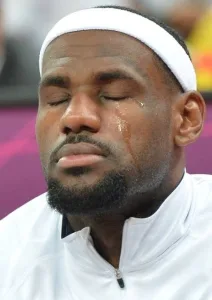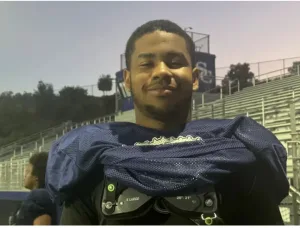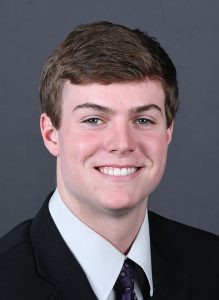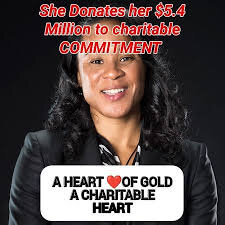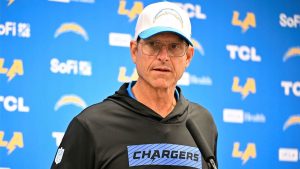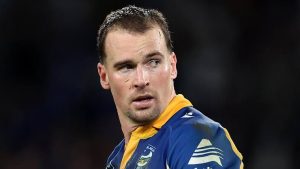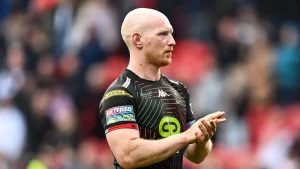
Lakers bus crash 2 dead with 8 minor injuries …
Because of an accident in Portland prior to him moving to LA to coach the Lakers, the McKinneys only had one car so Jack took his son’s bike to travel through his Palos Verdes neighborhood. At an intersection at the bottom of a hill at the corner of Whitney Collins Drive and Stonecrest Road, McKinney applied the brakes, but they locked up. It is still unknown if this was due to a brake failure itself as portrayed in the show, but the end result was the same: McKinney flew over the handlebars and face-first into the pavement.
Here is what we do know for sure, from the police report of a single witness, as covered in Pearlman’s book:
I drew up to the stop sign on the corner. A man came down the hill [toward the intersection] on his bicycle. He was not speeding, as I remember. He seemed to be going at a moderate speed, then he slowed down even more and looked at the corner.
My impression was that he put his brakes on and something happened then . . . his bicycle went out from under him, and all of a sudden he fell forward . . . and slid on his belly for about 15 to 18 feet. [McKinney] was practically unconscious—he could move but he seemed to be out. He had a loud, raucous breathing, like when someone’s snoring. Then blood started coming out of his mouth slowly.
The injuries were so severe that when the ambulance and attendants arrived to the scene, “This guy’s not going to make it” was one of the phrases uttered after seeing McKinney. He would be transported to the hospital where he would bounce in and out of a coma before being diagnosed as suffering severe head injuries, a facial fracture and a fractured elbow.
He does not remember the incident, nor much of the ensuing weeks. The situation was dire enough that only close family was allowed to see him in the hospital, with even Dr. Jerry Buss and Kareem Abdul-Jabbar being turned away. Westhead was only allowed to see him because McKinney’s wife lied and said the two were brothers, an indicator of just how close the two families were.
Before any of the actual gameplay even starts, we have more off-court content to open the episode, as Dr. Buss is attempting to perfect everything away from the court that would make The Forum the attraction it would become, most notably in The Forum Club. And for all the loud criticisms of some of the show’s inaccuracies, its portrayal of the iconic venue is pretty much lifted directly from Pearlman’s pages.
(Claire) Rothman began by special-ordering an enormous red canopy that announced THE FORUM CLUB in large letters. On a recent trip to Las Vegas, Rothman had visited a shopping mall where the concrete floor was treated with an acidic glaze that brought out a rainbow hue. “So we did that outside the Forum Club, too,” she said. “We put down new carpet, made a finish out of walnut shells . . . just spared few expenses to make it amazing.”
Before long, the Forum Club wasn’t merely a bar inside an arena. It was one of the hottest spots in Los Angeles. In the hours leading up to almost every game, as 250 or so people ate fancy sit-down meals, Buss hosted a dinner for friends and celebrities at his personal table. Employees anxiously wondered who would show up on any given night—Rob Lowe? Charlie Sheen? Tony Danza? John Candy? Dyan Cannon? Jack Nicholson? Ali McGraw? Luther Vandross? John Travolta? With a cigarette perpetually stashed between his fingers and a Playmate of the Year candidate by his side, Buss reveled in the beauty of his success. This was his room inside his building, and everyone was there to watch his team. When the game began, Buss sat far off the court, in a section near the top of the building. He didn’t need to be near the players to feel the action. He had the Forum Club. “Dad was so happy,” said Jeanie Buss. “He knew how fortunate he was.”
What wasn’t shown in the episode is how much of a destination the Forum Club became AFTER games, let alone before them. And it was hardly just spectators excited to hit up the Forum Club, as Pearlman’s book described how players — both the Lakers and their opponents — practically raced up to the exclusive venue after games.
If the Forum Club seemed lively before games, it was wild and exotic and enrapturing afterward. Being a Laker in the 1980s came with multiple perks—none greater than regular access to a world thought to be written about only in Penthouse essays. As soon as the fourth quarter wrapped up and the average fans headed toward the parking lot, the Forum Club exploded into bright color and neon light. “We’d rush to the locker room, change and rush into the Forum Club,” said Clay Johnson, a backup guard. “We reserves had to get up there before Magic and Norm arrived. Because once they were there, we had no chance. We wanted first dibs on the women.” Select high-end season ticket holders could purchase Forum Club passes for the relatively inexpensive price of three hundred dollars. Once inside, they mingled with athletes, actors, dancers and singers.
“In a way, visiting teams probably enjoyed the Forum Club more than our guys did,” said Linda Rambis. “It was an escape for them. A vacation from Milwaukee or Detroit or wherever they played. It’d be, ‘OK, you kicked our asses—now where’s the Forum Club?’”
…
“The Forum Club? Unbelievable, unbelievable, unbelievable,” said Wes Matthews, who visited as a journeyman guard, then joined the Lakers in the late 1980s. “Magic had his own section in the back where he had twenty-five to thirty women waiting for him. Why wouldn’t you go there? It was the pickup spot. You go in there, you’re gonna come up, as they say in the hood. You’re coming up with something. A lot of the players will tell you they couldn’t even concentrate, they wanted the game to end ASAP so they could go upstairs. Everyone and their mama was trying to get in, trying to get with the Laker Girls. They could have opened that place alone, just as a club.”
